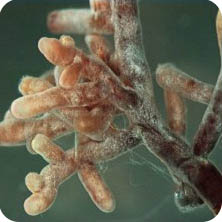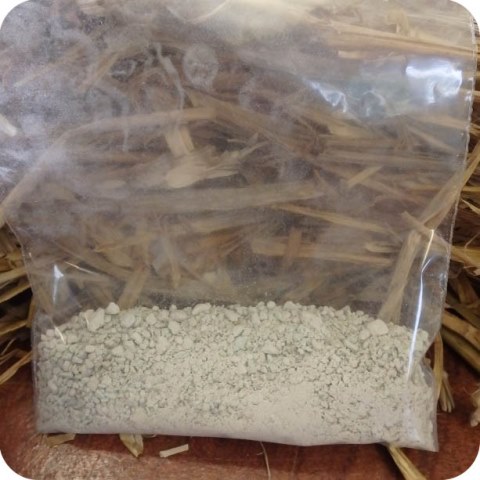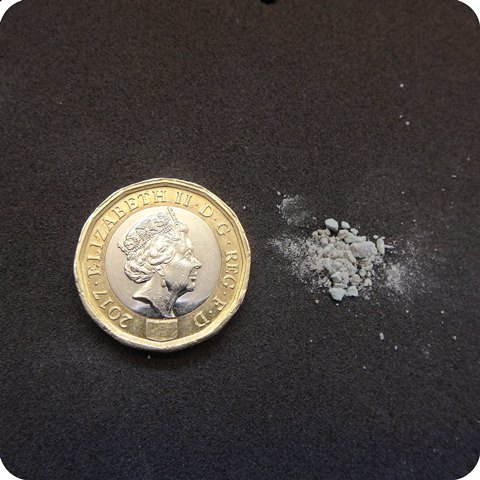
Mycorrhizal Fungi granules (Grams)
Mycorrhizal fungi granules are used to aid plant growth of some species of wildflowers. They are applied to the planting hole at the time of planting. The amount per plug is quite low, about 0.2g to 0.4g per plug (a very small pinch). If your ground has been improved it is likely the soil bacteria and fungi are lacking or are quite low in number and fungi species. Adding Mycorrhizal fungi granules gives the newly planted wildflower a great start.
Our Mycorrhizal fungi granules are sold in grams and come in a small bag. This product is priced per unit (1 gram of granules), and we have a minimum order of 20 units (20 grams) for our mycorrhiza. The mycorrhiza supplied is an Endomycorrhiza species and will be the best for the plants provided.
Add granules when planting.
When planting create the planting hole with a dibber/or stick for our standard plugs (50mm deep).
Add a small pinch of mycorrhiza to the planting hole (the amount per plug is quite low, about 0.2g to 0.4g per plug (a very small pinch – see photo).
Place the plant in to hole and press down with thumbs.
Water the plant afterwards.
What are mycorrhizal fungi?Mycorrhizas are fungal associations between plant roots and beneficial fungi. The fungi effectively extend the root area of plants and are extremely important to most wild plants, but less significant for ornamental garden plants. Mycorrhizae play important roles in plant nutrition, soil biology and soil chemistry.
A mycorrhiza (from the Greek μύκης mýkēs, "fungus", and ῥίζα rhiza, "root") is a symbiotic relationship between a fungus and a plant. The term mycorrhiza refers to the role of the fungus in the plant's rhizosphere (which is its root system). In a mycorrhizal association, the fungus colonizes the host plant's root tissues. The fungus either lives on the outside of a plant (Ectomycorrhiza) or within the plant roots (Endomycorrhiza).
What do they do?
Mycorrhizas are beneficial to its ‘host’ plant by making soil nutrients and moisture more readily available to the plant. This allows the plant to take in essential nutrients, often phosphorous, and this improves the plants growth and survival. The plants health is also improved and mycorrhizas also seem to confer protection against root diseases. What the mycorrhiza gets in return is a ‘free’ supply of sugars which it cannot make itself.
We are now learning much more about the complex association and neither fungi nor plants could survive in many uncultivated situations without this mutually beneficial arrangement. It is therefore probable that mycorrhizas are crucial in making nutrients (especially phosphorous) available to plants in uncultivated soils. For this reason it is best not to use phosphorous rich fertilisers in conjunction with mycorrhizal fungi.
Adding mycorrhizal fungi when planting?
We recommend adding mycorrhizal fungi granules at the time of planting so as to aid plant growth. Most of our wildflowers have an association with soil fungi and bacteria. If you are planting in a previously fertile area, cultivated soil (even just dug over), heavily worked soil, levels of fungicide/herbicide added or just generally poor soil then adding mycorrhiza fungi gives the plant the best start.
Mycorrhizal fungi in the garden
Mycorrhizal fungi are often seen in gardens but may be less effective on frequently cultivated soils that have been heavily fertilised and manured. Use of fungicides can also inhibit mycorrhizal fungi. It is good gardening practice to use the lowest feasible amounts of manure, fertiliser, fungicides, and cultivation. This will not only save gardeners time and money, but also helps towards protecting the environment.
| Dimension (L x W x H) | 0 x 0 x 0 |
| Weight | 0 |

